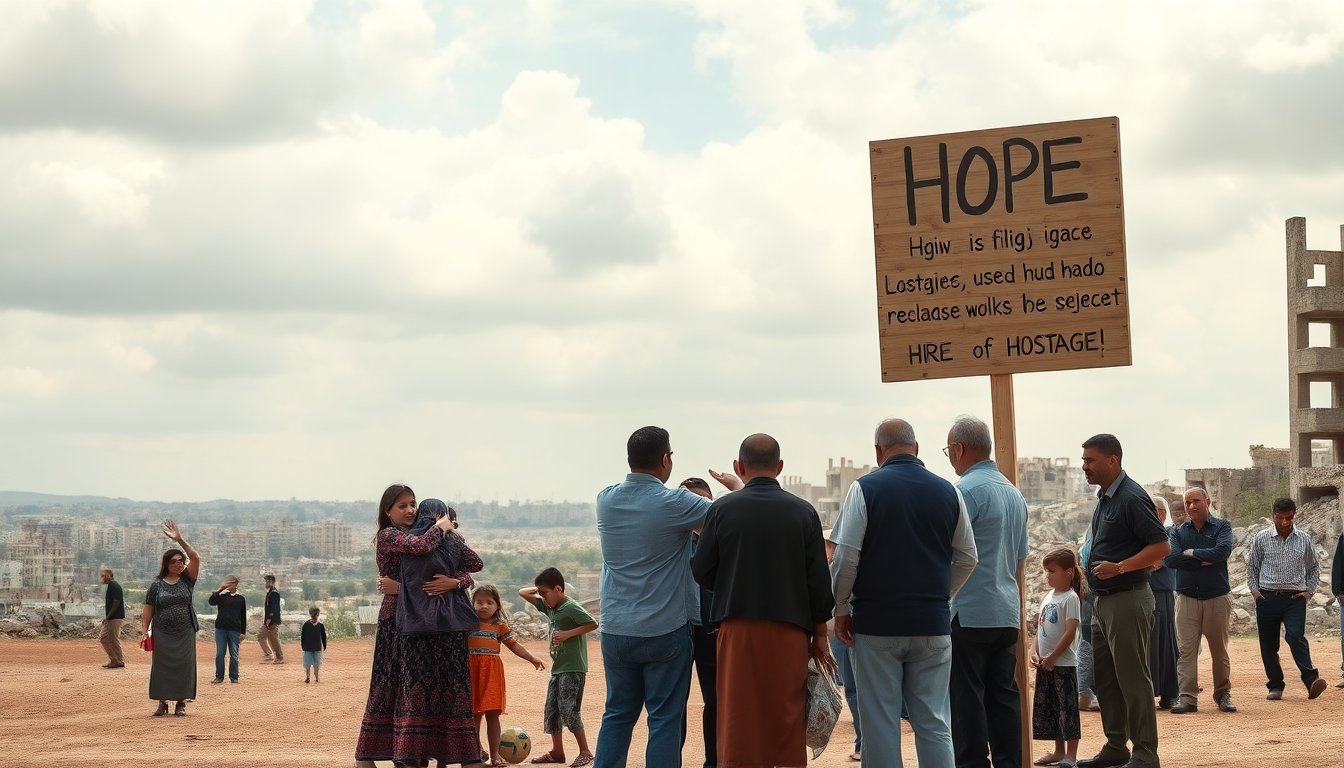Table of Contents
In a significant development regarding the ongoing conflict, the Gaza hostage release agreement has emerged as a pivotal step toward resolving tensions in the region. This deal outlines a comprehensive plan aimed at addressing the humanitarian crisis resulting from prolonged hostilities.
The first phase of this agreement is particularly noteworthy as it emphasizes the release of all living hostages currently held by Hamas. This move is seen as a critical humanitarian gesture and a potential turning point in ongoing negotiations.
Key aspects of the agreement
At the heart of the Gaza deal is the commitment to ensure that every living hostage is released. This decision is not merely a tactical maneuver; it is rooted in a broader strategy to facilitate dialogue and peace in a region fraught with strife. The act of releasing hostages is expected to foster trust between the involved parties, potentially leading to further negotiations.
Humanitarian implications
The impact of releasing hostages extends beyond mere numbers; it signifies a willingness to engage in dialogue and address humanitarian concerns. By prioritizing the safety of individuals, the agreement aims to alleviate some of the suffering experienced by families torn apart by conflict. The release of hostages is anticipated to provide a sense of relief not only to the hostages themselves but also to their loved ones who have endured a prolonged period of uncertainty.
Challenges and considerations
While the initial phase of the Gaza deal is promising, it is essential to recognize the challenges that lie ahead. The successful implementation of the agreement depends on various factors, including the cooperation of all parties involved. The complexities of the situation in Gaza cannot be overlooked, as the environment is often marred by distrust and conflicting narratives.
Potential obstacles ahead
One significant hurdle in executing the hostage release agreement is ensuring the safety of the hostages during the transition. There have been instances in the past where negotiations have faltered due to misunderstandings or last-minute changes in plans. Therefore, it is crucial for all parties to maintain open lines of communication to navigate potential pitfalls effectively.
Moreover, the broader geopolitical landscape plays a role in the success of this agreement. External factors, such as the influence of regional powers and international stakeholders, can significantly impact the dynamics of the negotiations. It is vital for the parties involved to remain cognizant of these influences and work collaboratively to foster an environment conducive to peace.
Looking forward
The initial phase of the Gaza hostage release agreement marks an essential milestone in the quest for peace and stability in the region. However, the journey ahead is fraught with challenges that will require dedication and commitment from all stakeholders. The hope remains that this agreement will pave the way for more comprehensive discussions aimed at addressing the underlying issues contributing to the conflict.
Ultimately, the success of the Gaza deal will depend on a collective effort to prioritize humanitarian concerns while navigating the complex political landscape. It is through such initiatives that a sustainable resolution can be achieved, fostering a future where peace prevails in Gaza and beyond.


